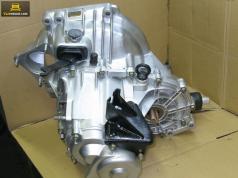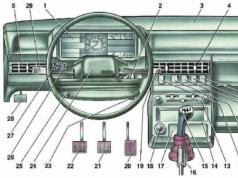Many motorists are interested in how to determine the problem with piston rings in a timely manner and what basic signs of malfunction of these parts. In order to understand this issue, it is necessary to clearly understand the appointment of compression and engineering rings of the engine, the features of their design and working conditions.
Features of the design and purpose of the piston rings of the engine.
Piston rings of the automotive engine perform 3 main tasks:
- Preventing the breakthrough of gases from the combustion chamber in Carter.
- The discharge of heat from the piston heated by the exhausted gases in the walls of the cylinders.
- Ensuring the lubrication of parts of the cylindroport group and preventing (or at least minimizing) oil from the crankcase into the combustion chamber and as a consequence of an increased oil consumption.
In most modern engines, these functions perform three piston rings:
The upper compression ring is responsible for sealing the combustion chamber and is experiencing very heavy loads, as it perceives most of the pressure of the exhaust gases during combustion. In addition, the rings operate under conditions of elevated temperatures, which affects the conditions of their lubricant and wear, which ultimately leads to increased oil consumption. To ensure confrontation with large temperature and power loads, the upper rings are made of high-strength cast iron alloyed by molybdenum, nickel and chrome.
Average compression-oil-chain ring In addition to the seal function, it still controls the lubricant of parts and prevents elevated oil consumption. During the stroke of the piston from the top of the dead point to the lower ring removes the oil from the cylinder walls. To ensure that this function is fulfilled, the average rings have a special shape that allows you to remove the oil from the walls when the piston is down and skip it when it prevents oil from entering the combustion chamber. Since these rings are less loaded than compression, they are usually made from a less durable material - gray alloyed cast iron with plate graphite. 
As you can guess from the very name, the main task of the lower oil gauge ring is the removal of the oil from the surface of the cylinder and through the holes or grooves in the piston groove drop in the crankcase. Since the functions of this ring differ from those that perform compression rings, its design is significantly different.
Currently, 2 types of scale rings received the greatest distribution:
- boxed with a spender spring;
- a typical, which consists of two disks and a two-function expander.
The main requirements for these are ring-melted by a good tracking to the walls of the cylinder and the high pressure on them, which ensures effective removal of lubricant material and prevent an increased oil consumption. Depending on the type of engineering rings, made of gray doped cast iron or carbon steel. For efficient work in a pair with a cast iron sleeve, their surface is chromat.

The main signs of wear of piston rings
With the wear of the upper compression rings, as a rule, compression is reduced in the engine, which is manifested in the deterioration of the accelerating dynamics of the car, and if the rings are not in all cylinders, then such an engine works unevenly. In order to determine in which cylinder are worn rings, it is necessary to measure compression. In a serviceable gasoline engine, it must be 11 - 13 bar, in a diesel engine - from 23 to 40 bar.
When worn oil slimming rings
Wearing or malfunction of the oil dialing rings is manifested in increased oil consumption under normal operating conditions. Also, the sign of the wear of the rings is the presence of black smoke from the system of release and the crankcase ventilation system (Sapuna). The reason for this is the burnout of the engine oil that has fallen into the chamber.

One of the possible features that may indicate the wear of the oil-chain rings, serves as candlesticks with oil, but it happens in the event that the oil caps of the valves are worn. To accurately determine the cause of the malfunction, the engine will be disassembled.
In most cases, modern internal combustion engines have the service life of the oil dialing rings, it is 150-200 thousand mileage kilometers, and in some engines even from 300 to 500 thousand. However, if the car is operated in difficult conditions or its owner does not change the oil in a timely manner, then their replacement will be It is necessary after 50 thousand kilometers. In this regard, making a decision on the replacement of compression and oil-chained rings, you should not focus only on the car.
What to do when wearing the rings?
In order to choose the way to solve the problem, it is necessary to find out for what reason it originated. The emergence of the above symptoms can be caused by wear or breakdown of compression and oil-chained rings or if they were stuck and lay down.
In the first case, it will be necessary to disassemble the engine, and install new parts instead of damaged. At the same time, it is necessary to carefully inspect all the conjugate parts, since when the rings breakdowns, the occurrence of scaling is possible, which can be eliminated only by conducting overhaul.
In case there is an assumption that the piston and oilmaging rings lay down, you can add a special additive to the oil. But this method is applied, as a rule, in preventive purposes.
Connected non-piston faults arise in practice quite often. Therefore, in order to prevent the occurrence of serious consequences and, as a result, large costs for repair, it is necessary to recognize the first symptoms in time and take appropriate measures.
Evgeny Shuba, Ph.D., Lecturer of the Department of Engine and Heat Engineering of the National Transport University







